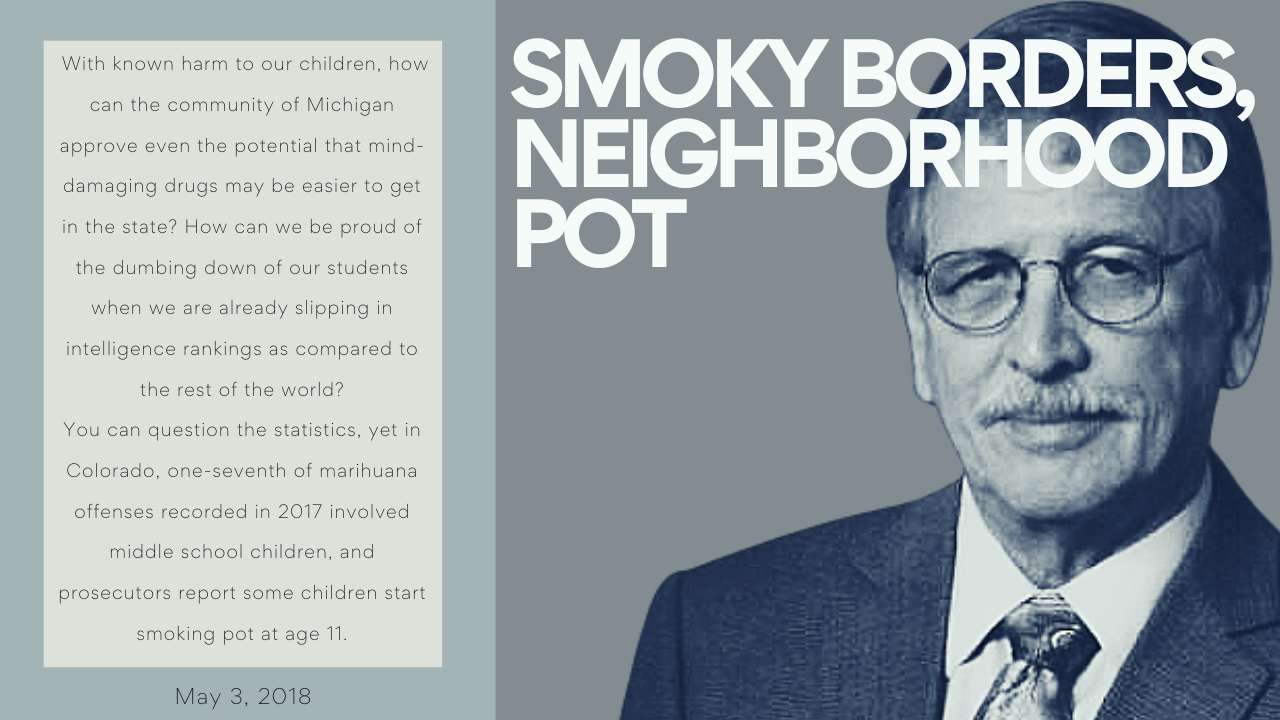Posted on November 17, 2022 View all news
Joe Tilton
May 3, 2018
What happens when “recreational” use of marihuana is legal in Michigan? Yet, like so many other things, what’s legal in one place may not be in another. How will Indiana and Ohio be affected with a pot free-for-all scramble here? Or, it may be that users don’t care and pushers see dollar signs at the borders. Regardless, the model is being experienced in Nebraska as a bordering state to Colorado. Thanks to the Colorado Springs Gazette (permission granted) we have results.
Three universities, including the University of Nebraska at Omaha, found that marihuana possessions arrests have tripled in seven counties that border Colorado. In essence, Colorado has become a “pusher state.” Will the same happen on Michigan’s borders?
In a report named “Borders Up in Smoke,” researchers found that “without exception, the rate of marihuana-related arrests, jail admissions and associated costs of incarceration have increased.” The cost to Nebraska is about $10.2 million annually.
Recreational use of pot in a neighboring state causes “a sharp increase in possession arrests in counties that border the neighbor state.” However, the issue appears to be mostly limited to adults. Juveniles appear to have less to do with imported pot than when it’s grown and legal in their home state.
Washington State found that 12-percent of their pot went to other places. Their bordering entities, Idaho and Canada experienced increases comparable to Nebraska.
What happens to Ohio and Indiana may be of no concern to Michigan citizens, yet the result in schools is something else. Since Colorado’s adult population bought into pot, the drug is seeping into public school classrooms. The result is more marihuana-related suspensions, more police visits and greater acceptance of pot by students who live around recreational dispensaries.
Twenty times in a typical school day, Colorado children are reported for marihuana use. Statewide, suspensions jumped 18-percent in the 2016-17 school year.
When school officials, particularly teachers, take an “oh well, what’s the harm” approach to pot use, they are subverting the very reason for claiming they deserve greater pay. Pot use permanently reduces IQ by eight points when used by people younger than 25, and national studies show that lifetime earnings are reduced as well. There goes better grades and lower earnings to tax for school funding. You would think universities would be radically opposed to pot.
With known harm to our children, how can the community of Michigan approve even the potential that mind-damaging drugs may be easier to get in the state? How can we be proud of the dumbing down of our students when we are already slipping in intelligence rankings as compared to the rest of the world?
You can question the statistics, yet in Colorado, one-seventh of marihuana offenses recorded in 2017 involved middle school children, and prosecutors report some children start smoking pot at age 11.
Colorado’s Division of Criminal Justice numbers from the previous school year show 368 incidents of all types at elementary schools with 13-percent involving marihuana. Middle school numbers are 18-percent of the 1,809 incidents involving pot and of the 4,118 high school problems, 30-percent were pot related.
Medical marihuana is already legal in Michigan, although restrictions are cumbersome to growers. CBD oil products are over-the-counter legal now.
If we believe that “first, we do no harm” when it comes to medical or other issues, what do we tell our neighboring states and our own children when we vote for legalized pot in November?

